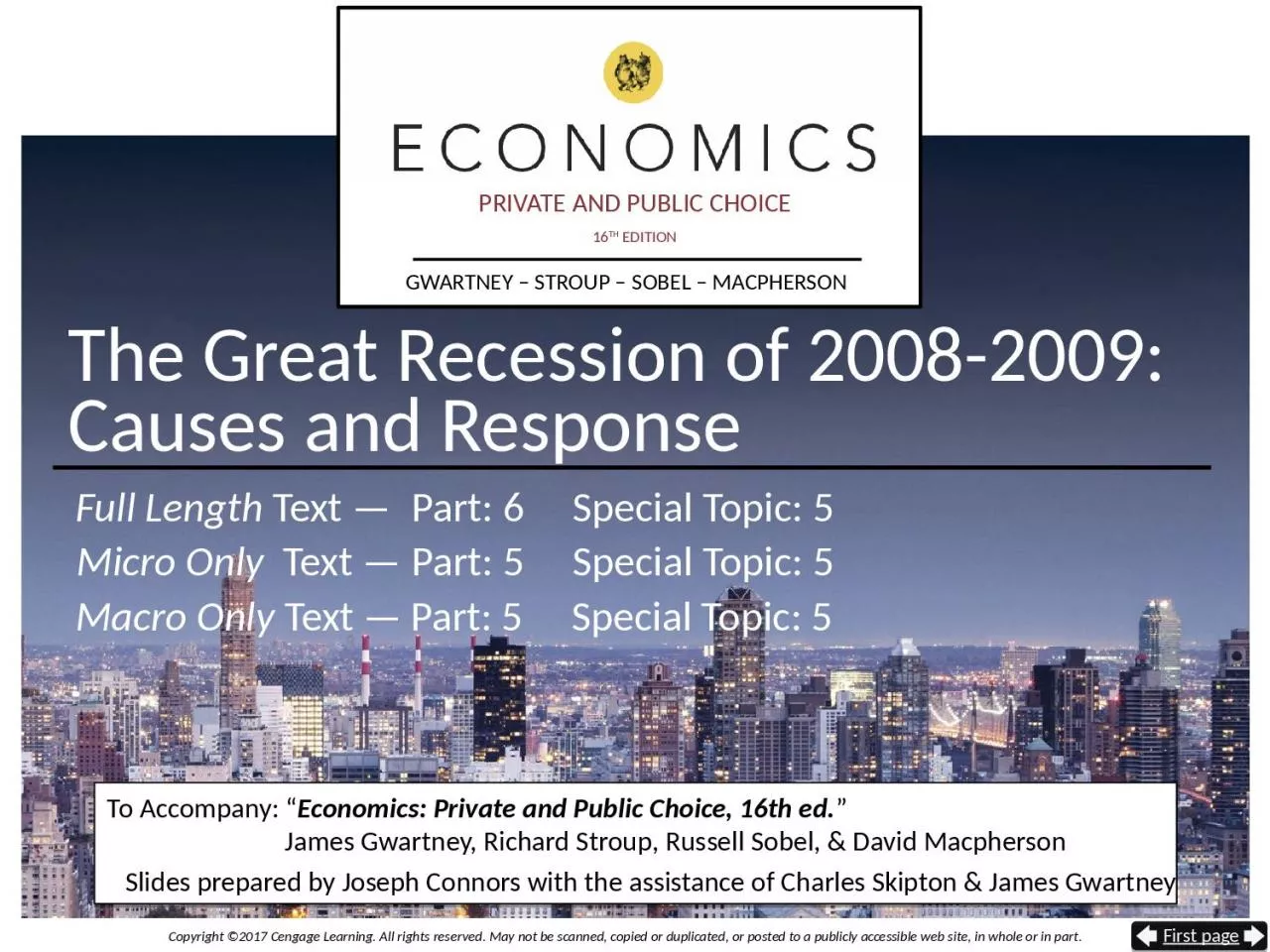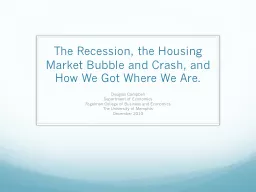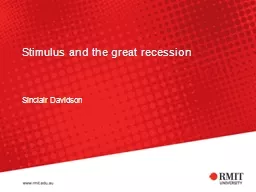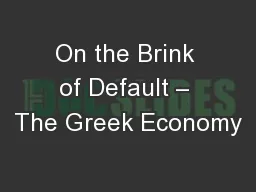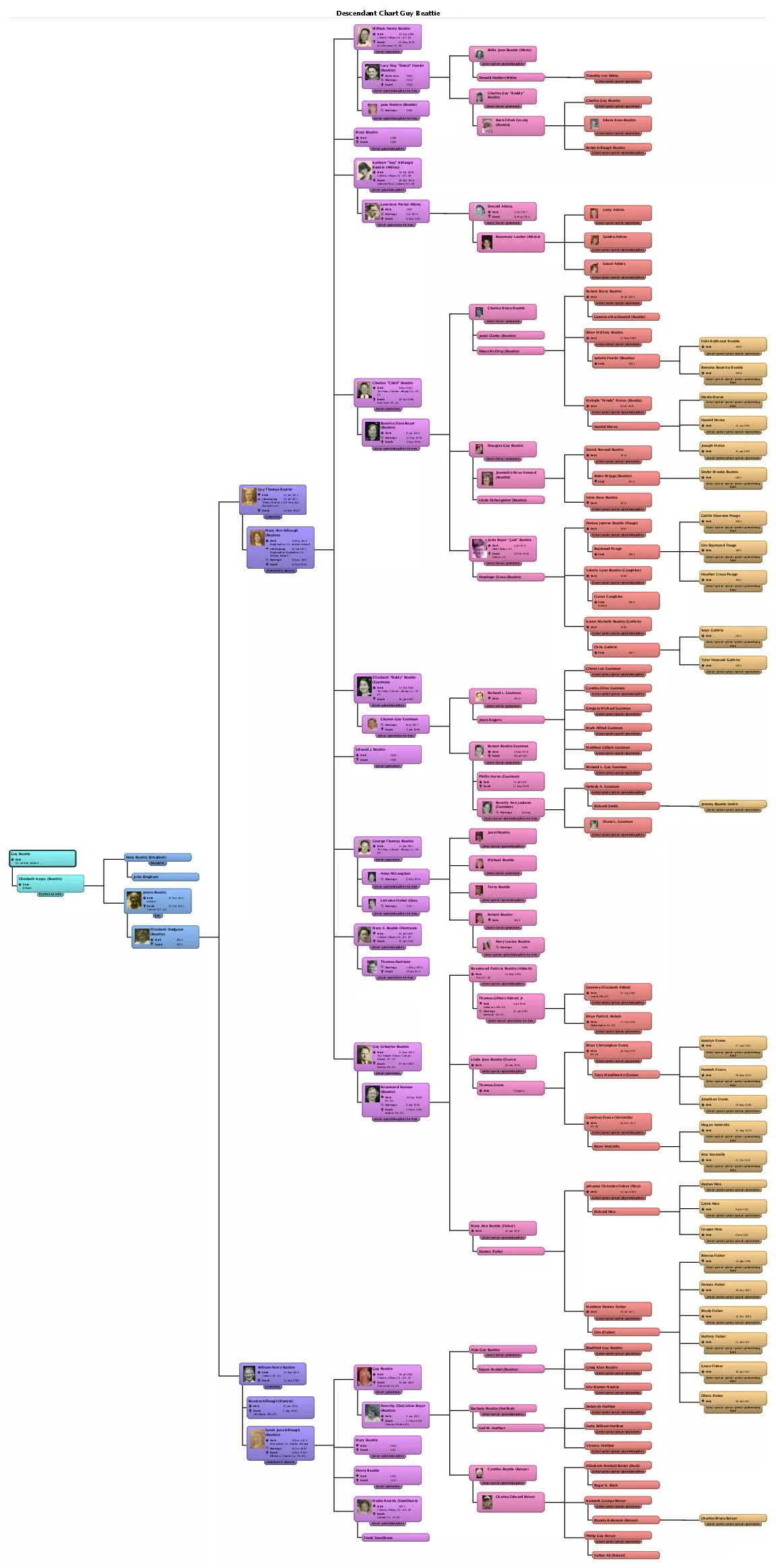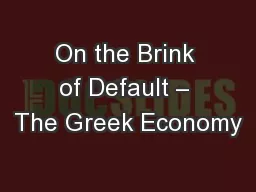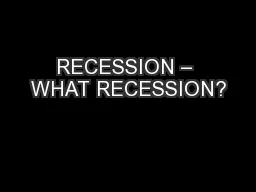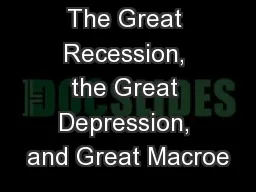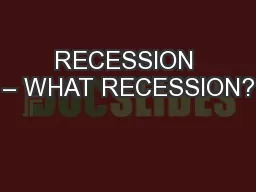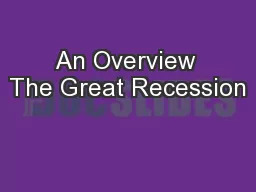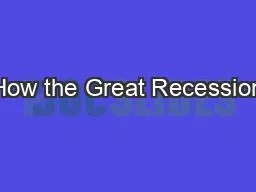PPT-The Great Recession of 2008-2009: Causes
Author : erica | Published Date : 2023-11-05
and Response The Crisis of 2008 The Crisis of 2008 The headlines of 2008 were about falling housing prices rising default and foreclosure rates failure of large
Presentation Embed Code
Download Presentation
Download Presentation The PPT/PDF document "The Great Recession of 2008-2009: Cause..." is the property of its rightful owner. Permission is granted to download and print the materials on this website for personal, non-commercial use only, and to display it on your personal computer provided you do not modify the materials and that you retain all copyright notices contained in the materials. By downloading content from our website, you accept the terms of this agreement.
The Great Recession of 2008-2009: Causes: Transcript
Download Rules Of Document
"The Great Recession of 2008-2009: Causes"The content belongs to its owner. You may download and print it for personal use, without modification, and keep all copyright notices. By downloading, you agree to these terms.
Related Documents

